Open Toe Compression Socks
Open toe compression socks are a specialized type of medical hosiery designed to improve blood circulation and alleviate discomfort in the lower extremities. Unlike traditional compression socks, which fully enclose the foot, open toe Anti-embolism stockings leave the toes exposed. This unique design offers several advantages, including greater breathability and the ability to wear them with a variety of footwear, including sandals and open-toed shoes.
Compression socks, in general, are made from elastic materials that apply graduated pressure to the legs. This pressure is highest at the ankle and gradually decreases towards the top of the sock, encouraging blood flow back towards the heart. Open toe Anti-embolism stockings are typically made from a blend of nylon, spandex, and sometimes cotton or other moisture-wicking materials. These combinations ensure durability, elasticity, and comfort, making them suitable for extended wear.
The primary function of open toe compression socks is to manage and prevent conditions such as varicose veins, deep vein thrombosis (DVT), and chronic venous insufficiency. They are also beneficial for reducing swelling, alleviating leg pain, and enhancing overall leg health. People who stand or sit for long periods, pregnant women, athletes, and individuals recovering from surgery are among those who might benefit from using open toe Anti-embolism stockings.
In addition to their medical benefits, open toe Anti-embolism stockings are also popular for their convenience and comfort. The open toe design allows for greater flexibility and ease of movement, making them a versatile option for various lifestyles and needs. Whether for medical purposes or general wellness, open toe Anti-embolism stockings provide an effective solution for those seeking to improve their leg health and comfort.
How Open Toe Compression Socks Work
Open toe compression socks employ a specialized compression technology aimed at enhancing blood circulation and reducing swelling in the lower extremities. These socks are designed to apply graduated pressure, which means the compression is strongest at the ankle and gradually decreases as it moves up the leg. This gradient pressure aids in pushing blood back towards the heart, thereby preventing pooling and stagnation in the veins. This mechanism is particularly beneficial for individuals who suffer from conditions such as varicose veins, deep vein thrombosis, and chronic venous insufficiency.
The open toe design of these compression socks plays a significant role in their functionality and user comfort. By leaving the toes exposed, these socks can accommodate individuals with toe sensitivities, bunions, or other foot conditions that might make traditional closed-toe socks uncomfortable. This design also allows for better breathability and temperature regulation, which can be especially advantageous in warmer climates. Moreover, open toe compression socks can be easier to put on and take off, offering greater convenience for those with limited mobility or dexterity issues.
Another benefit of the open toe feature is its ability to provide versatility in footwear choices. Users can wear these socks with open-toed shoes or sandals without compromising on the therapeutic effects of the compression. This makes them a practical choice for both everyday wear and special occasions. Furthermore, the open toe design facilitates better inspection and care of the feet, which is crucial for individuals with diabetes or other conditions that necessitate regular foot monitoring.
In summary, open toe compression socks combine the medical benefits of graduated compression with the added advantages of comfort, ease of use, and versatility. This makes them an excellent option for individuals looking to improve circulation and reduce swelling while addressing specific foot conditions and preferences. The open toe design not only enhances user experience but also broadens the applicability of compression therapy in various settings.
Health Benefits of Open Toe Compression Socks
Open toe compression socks offer a multitude of health benefits, making them a valuable addition to many individuals’ daily routines. One of the primary advantages is their ability to alleviate symptoms associated with varicose veins. By applying graduated pressure to the legs, these socks help to improve blood flow, reduce swelling, and minimize the discomfort caused by varicose veins.
Another significant benefit is their efficacy in preventing and managing deep vein thrombosis (DVT). DVT is a condition where blood clots form in the deep veins of the legs, which can lead to serious complications if not addressed. The graduated compression provided by open toe Anti-embolism stockings promotes better circulation, reducing the risk of clot formation and aiding in the prevention of DVT.
Individuals suffering from edema, or the accumulation of fluid in the legs, can also find relief through the use of open toe compression socks. The socks work by exerting pressure that encourages the movement of excess fluid back into the circulatory system, thereby reducing swelling and discomfort. This can be particularly beneficial for those who experience edema as a result of prolonged periods of standing or sitting.
Chronic venous insufficiency, a condition where veins struggle to send blood from the legs back to the heart, can also be managed effectively with open toe Anti-embolism stockings. The consistent pressure helps to improve vein function and decrease symptoms such as pain, swelling, and fatigue.
Moreover, open toe compression socks are advantageous during recovery periods, whether post-surgery or after intense physical activities. They assist in reducing muscle soreness, enhancing circulation, and speeding up the recovery process. Athletes and individuals recovering from surgical procedures can benefit significantly from the support and improved blood flow provided by these socks.
Overall, open toe Anti-embolism stockings are a versatile and beneficial tool for managing a variety of health conditions and enhancing recovery, making them a practical choice for many people.
Who Should Use Open Toe Compression Socks?
Open toe compression socks serve a wide range of individuals, providing specific benefits that cater to various needs. They are particularly advantageous for athletes, travelers, pregnant women, and individuals with certain medical conditions. Understanding the target audience can help highlight the scenarios where these socks prove most beneficial.
Athletes often turn to open toe Anti-embolism stockings to enhance performance and recovery. The graduated compression supports improved blood flow, which can reduce muscle fatigue and soreness post-exercise. This can be especially useful for runners, cyclists, and those engaged in high-intensity training. By maintaining optimal circulation, these socks can help athletes recover faster and improve overall endurance.
Travelers, especially those on long-haul flights, can greatly benefit from open toe compression socks. Extended periods of immobility during travel can lead to swelling and discomfort in the legs. The compression provided by these socks helps mitigate the risk of deep vein thrombosis (DVT) and prevents swelling, ensuring a more comfortable journey. They offer a practical solution for frequent flyers who want to maintain leg health during extended travel periods.
Pregnant women often experience swelling in their legs and feet due to increased blood volume and pressure on the veins. Open toe compression socks can alleviate this discomfort by promoting better blood circulation, reducing swelling, and providing necessary support. This can make a significant difference in comfort levels, particularly during the later stages of pregnancy.
Individuals with specific medical conditions, such as chronic venous insufficiency, varicose veins, or lymphedema, can also find relief with open toe compression socks. These socks offer therapeutic benefits by reducing swelling, improving venous return, and preventing the progression of vein-related issues. They can be an essential part of managing these conditions, enhancing the quality of life for those affected.
In various scenarios, from athletic endeavors to medical needs, open toe compression socks offer targeted support and relief. Their versatile design makes them suitable for a broad audience, addressing specific requirements and promoting overall well-being.
Choosing the Right Open Toe Compression Socks
When selecting open toe compression socks, it’s essential to consider several factors to ensure you make an informed choice that meets your individual needs. The first aspect to evaluate is the compression level. Compression socks come in various levels, typically measured in millimeters of mercury (mmHg). Light compression (8-15 mmHg) is suitable for minor swelling and fatigue, while moderate compression (15-20 mmHg) is ideal for those with mild varicose veins or for long durations of sitting or standing. Higher levels, such as firm (20-30 mmHg) or extra-firm (30-40 mmHg), are generally recommended for more severe conditions, including chronic venous insufficiency or post-surgical recovery.
The materials used in the construction of open toe Anti-embolism stockings also play a crucial role. Common materials include nylon, spandex, and cotton blends. Nylon and spandex offer elasticity and durability, ensuring that the socks maintain their shape and efficacy over time. Cotton blends provide additional comfort and breathability, which can be particularly beneficial for individuals with sensitive skin or allergies. It is advisable to choose materials based on your personal comfort and any specific skin conditions you may have.
Size and fit are equally important when choosing open toe compression socks. Ill-fitting socks can cause discomfort and reduce their effectiveness. To determine the correct size, measure the circumference of your ankle, calf, and sometimes thigh, depending on the sock length. Many brands offer sizing charts to help you find the perfect fit. It’s essential to follow these guidelines closely to ensure optimal compression and comfort.
Brand reputation is another factor to consider. Established brands with positive customer reviews are generally more reliable and offer better quality products. Researching and reading reviews can provide insights into the durability, comfort, and effectiveness of the socks.
Lastly, consulting with a healthcare provider before purchasing open toe compression socks is highly recommended. A healthcare provider can offer personalized advice based on your medical history and specific needs, ensuring that you select the most appropriate compression level and type of sock.
How to Use and Care for Open Toe Compression Socks
Open toe compression socks are designed to provide therapeutic pressure to your legs, promoting better blood flow and reducing discomfort. To maximize their benefits, it is essential to use and care for them properly. Below is a step-by-step guide on how to wear and remove open toe Anti-embolism stockingss, along with tips on maintaining their elasticity and lifespan.
When putting on open toe compression socks, it is best to do so in the morning when your legs are less swollen. Start by sliding your foot into the sock, ensuring the open toe section aligns correctly with your toes. Gently pull the sock up over your heel and then gradually work it up your leg. Avoid bunching or twisting the fabric to ensure even compression. If you encounter resistance, use rubber gloves to help grip and smooth the sock into place. Remove the socks by rolling them down from the top, turning them inside out as you go, to avoid overstretching the material.
Proper care is crucial for maintaining the elasticity and effectiveness of your open toe compression socks. Hand washing them with mild detergent in lukewarm water is recommended. Avoid using bleach or fabric softeners, as these can degrade the material. After washing, gently squeeze out excess water and lay the socks flat to air dry. Do not wring or twist the socks, as this can cause them to lose their shape. Avoid machine drying, as high heat can damage the fibers.
Store your compression socks in a cool, dry place away from direct sunlight to prevent deterioration. Folding them neatly instead of balling them up will help maintain their elasticity. Common mistakes to avoid include wearing them with sharp objects like toenails or jewelry that can snag the fabric, and not replacing them regularly if they lose their compressive strength. By following these guidelines, you can ensure that your open toe compression socks remain effective and durable.
Comparing Open Toe vs. Closed Toe Compression Socks
When it comes to choosing between open toe and closed toe compression socks, understanding the differences and benefits of each type is crucial for optimal usage and comfort. Both styles serve the primary purpose of improving blood circulation, reducing swelling, and providing support, yet they cater to different needs and preferences.
Open Toe Compression Socks: These socks are designed with an opening at the toe, allowing the toes to remain free. One significant advantage of open toe Anti-embolism stockings is their breathability. The open design allows for better air circulation around the toes, which can be particularly beneficial in warmer climates or for individuals prone to sweaty feet. Additionally, open toe socks can accommodate a wider range of foot sizes and shapes, making them a versatile option for those with toe deformities or bunions. They are also easier to wear with open-toed shoes, offering a more discreet look.
On the downside, open toe compression socks might not provide the same level of support and protection for the toes compared to their closed toe counterparts. Some users may also find the transition between the compressed foot and the open toe area uncomfortable or less aesthetically pleasing.
Closed Toe Compression Socks: Closed toe compression socks encase the entire foot, including the toes, offering comprehensive coverage and support. This design is advantageous for individuals seeking uniform compression from the ankle to the toes, which can help in reducing edema more effectively. The closed toe variant also provides added warmth, making them a better choice for colder climates. Moreover, they protect the toes from friction and pressure that can occur with certain types of footwear.
However, closed toe compression socks can sometimes feel restrictive, especially for those with larger or irregularly shaped feet. They might also be less breathable, leading to discomfort in hot weather or for individuals who sweat more.
In practice, the choice between open toe and closed toe compression socks often comes down to personal preference and specific needs. For example, athletes or individuals with active lifestyles might prefer open toe socks due to their enhanced breathability and flexibility. Conversely, people dealing with severe swelling or those who need maximum support might opt for closed toe socks. Testimonials from users frequently reflect these preferences, with some praising the comfort and versatility of open toe socks, while others appreciate the comprehensive support provided by closed toe variants.
Common Myths and Misconceptions
Open toe compression socks often generate a variety of myths and misconceptions that may deter potential users from experiencing their benefits. One prevailing myth is that these socks are less effective than their closed-toe counterparts. However, research and clinical studies have demonstrated that open toe Anti-embolism stockings provide the same level of compression and therapeutic benefits, aiding in the prevention of deep vein thrombosis (DVT), the reduction of swelling, and the improvement of blood circulation. The open toe design simply offers additional comfort and flexibility.
Another common misconception is that open toe compression socks are only suitable for individuals with specific medical conditions, such as varicose veins or chronic venous insufficiency. In reality, a wide array of people can benefit from wearing these socks, including athletes seeking to enhance performance and recovery, individuals who spend long hours standing or sitting, and even travelers looking to prevent leg discomfort during flights. Open toe Anti-embolism stockings can be a versatile tool for promoting overall leg health.
Some believe that open toe compression socks are difficult to put on and uncomfortable to wear. Modern advancements in fabric technology have led to the development of socks that are both easy to apply and comfortable for prolonged use. Many open toe Anti-embolism stockings now feature breathable, moisture-wicking materials and graduated compression that adapts to the natural contours of the leg, ensuring a snug yet comfortable fit.
Lastly, there is a misconception that open toe Anti-embolism stockings are less fashionable than other types of hosiery. Today, these socks are available in a variety of styles, colors, and patterns, allowing users to maintain their sense of style while reaping the health benefits. From sleek, professional designs to vibrant, casual options, there is an open toe compression sock to suit every preference.
By debunking these myths and misconceptions, it becomes clear that open toe compression socks are a versatile, effective, and comfortable option for a wide range of users. Evidence-based information underscores their efficacy and helps alleviate concerns, encouraging more individuals to consider incorporating these socks into their daily routine.


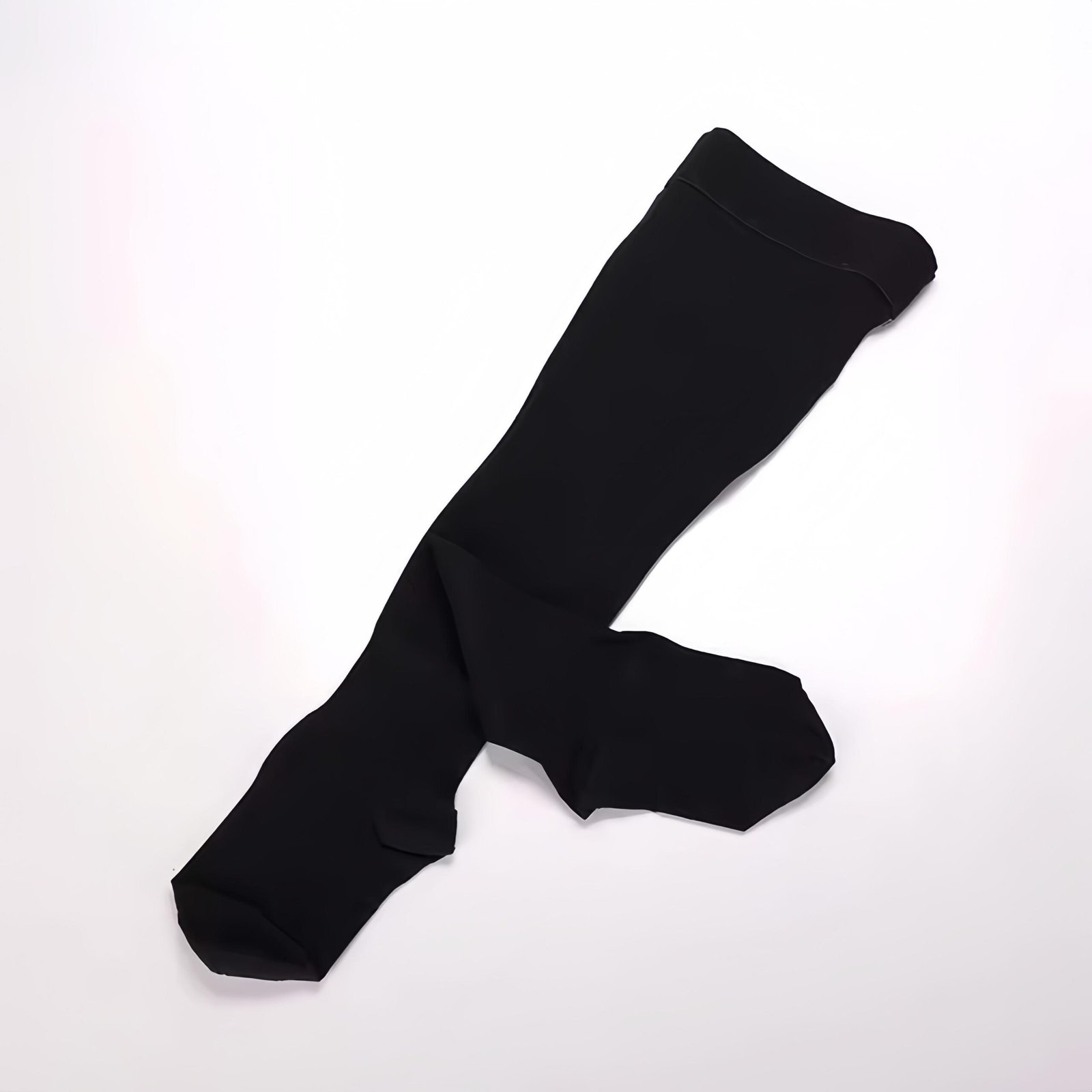



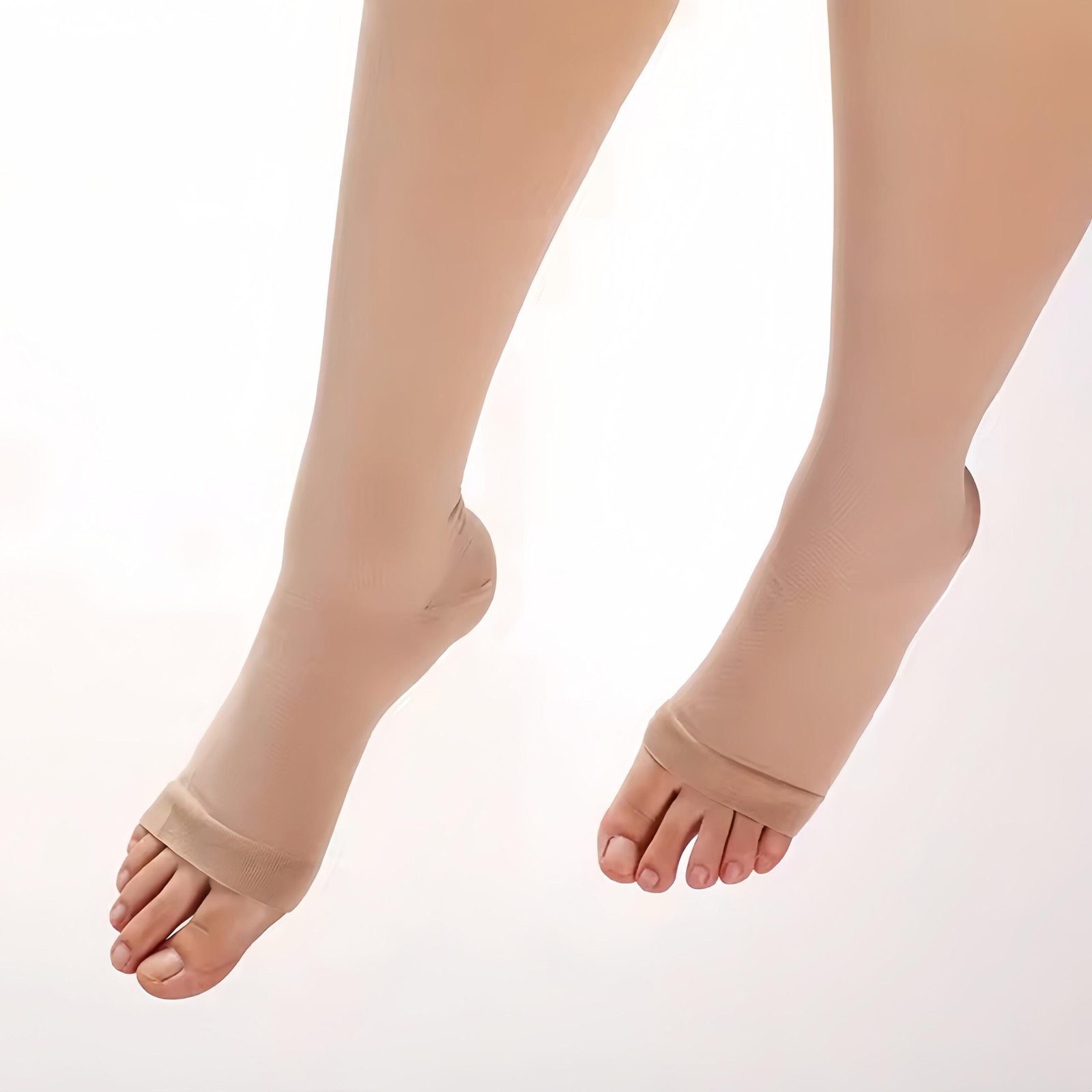
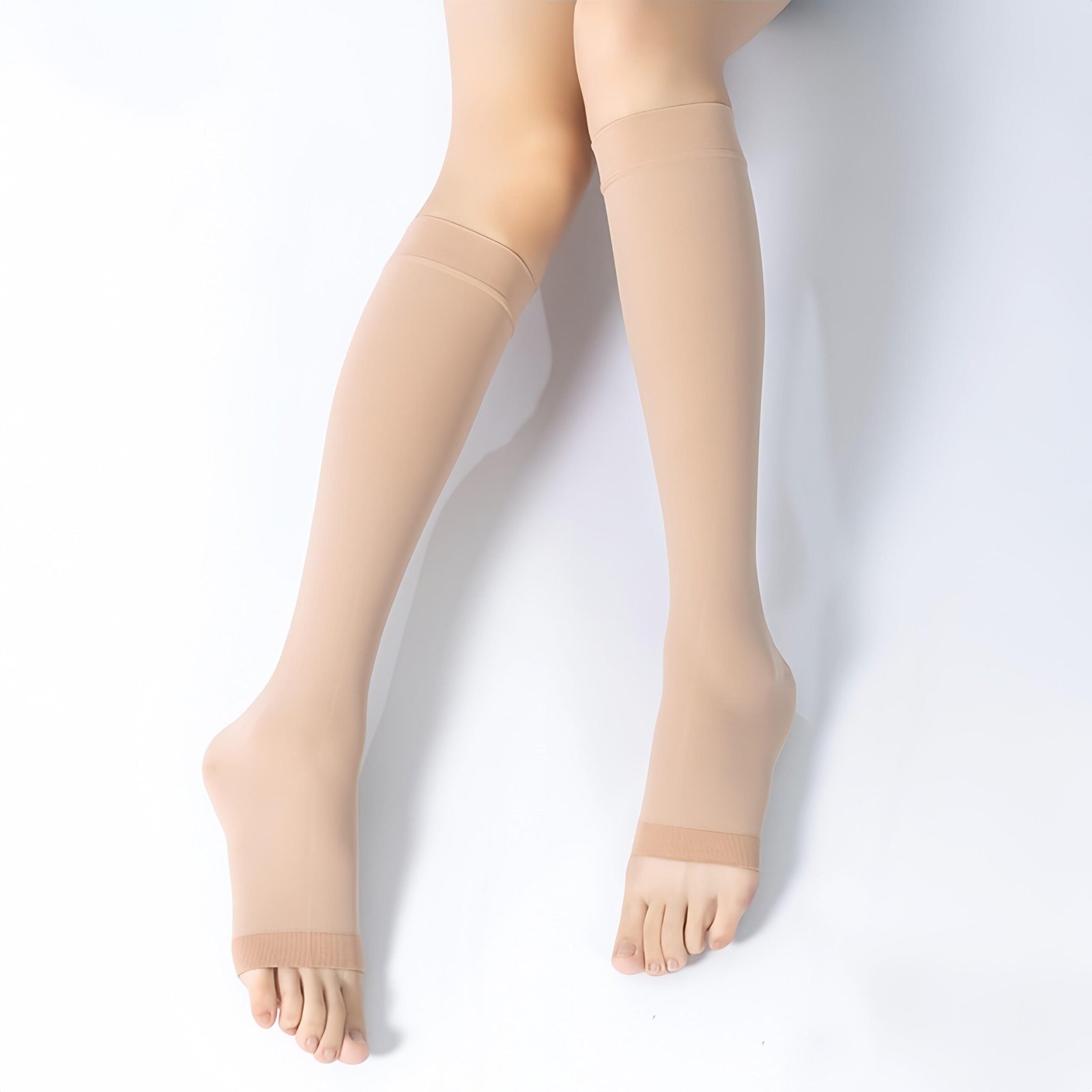











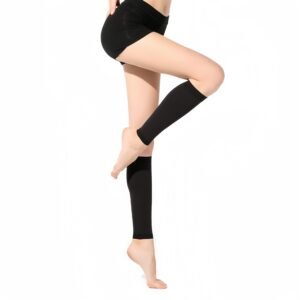

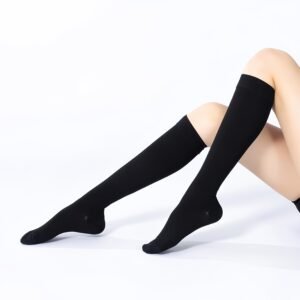
Reviews
There are no reviews yet.